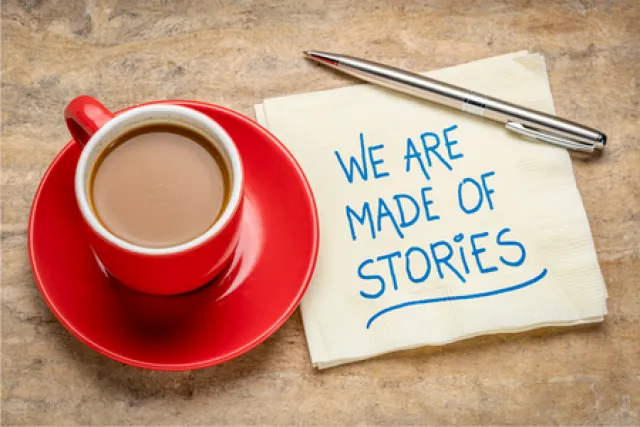Storytelling is a powerful tool to support your organisation’s social mobility strategy. It can help colleagues to understand the challenges others have faced, helps leaders to understand how they can help and promotes an inclusive, trust-based culture.
Ahead of our employers’ masterclass ‘The art of using storytelling to build inclusion’ we asked Shannon Miller, from the SMC’s Communications team, to tell us more about how to make sure you are using case studies and stories most effectively.
Storytelling has the power to transform complex ideas and data into compelling narratives that people easily relate to and understand. Using real stories to show the human impact that policies can have can really help drive your social mobility initiatives forward, and create a more inclusive organisational culture, where employees can see that those from different backgrounds are supported and celebrated.
However, not all storytelling is equal, and, done wrong, it can have the opposite effect!
So how can you make sure that your organisation is getting storytelling right?
Ask, don’t expect
It’s essential to remember that not everyone will feel comfortable sharing their personal story. While it can be inspiring to hear about others’ experiences, sharing those personal details can feel very vulnerable, and may not be something everyone wants to do.
Never assume that someone will be happy to share their story, and make sure that any request you make for someone to speak or write about their experience is clear about the fact that there is no obligation to participate. This is particularly important if you’re a manager within your organisation – it’s essential to make sure that more junior members of staff don’t feel pressured into sharing more than they want to just because the request comes from their boss!
Consider whether there may be a different way of sharing that may make someone more comfortable. One person may prefer to talk in-person about their experiences in a meeting, where their words will be private and one-off. Another may much prefer to write a few sentences for social media, or your website. There are many different forms of storytelling, and they can all have great impact, so make sure you’re considering all possibilities.
Keep it authentic
When it comes to storytelling, it’s crucial not to edit someone’s own voice too much. While it’s easy, particularly if you work in a comms team, to want to tweak sentences and phrases to create the perfect, polished product, resist!
When we edit someone’s voice too heavily, we risk diluting their message or changing its meaning entirely. Often we also lose the impact of the story, as it will begin to feel false or manufactured, and people lose trust in what they’re being told.
It’s important to remember that the goal of storytelling for Diversity, Equality & Inclusion (DEI) initiatives is to amplify voices that are often marginalised and to provide a platform for those who are not typically heard. Let them speak in their own words about their experiences.
This doesn’t mean you can’t have any input! Providing a clear brief can reduce the need for any editing by making sure that the person sharing their story knows exactly how and where it will be used and if there’s any specific information you’d like them to include.
Give a clear call to action
Storytelling should not only be about sharing someone’s experience. While hearing or reading a social mobility story can help people to understand their colleagues’ backgrounds and potential challenges that they may have faced, the real value of storytelling is when it inspires and encourages people to take real action.
In September 2022, BBC reporter Sean Dilley appeared on the news to tell the story of his last walk with guide dog Sammy. The piece was a powerful insight into the impact a guide dog has on someone’s life, and at the end of the segment Sean shared details of how to sign up to foster a trainee guide dog, to ensure even more people can benefit in the future. 4,500 people came forward to volunteer, and The Guide Dogs for the Blind Association received a record number of applications!
Ensuring that you end with a clear call to action is a really simple way that you can get maximum impact from storytelling, and it’s easy to implement.
Did mentoring help someone to progress in their career? Signpost your organisation’s mentoring scheme!
Has someone talked about the impact of learning about a job while they were in school? Tell people how to get involved in your outreach activities!
By identifying opportunities for people to act on what they’ve learnt from stories, you can make storytelling an incredibly effective vehicle for change in your organisation.
